外研版(2019)必修三 Unit 5 What an adventure! Understanding Ideas课件(48张ppt)
文档属性
| 名称 | 外研版(2019)必修三 Unit 5 What an adventure! Understanding Ideas课件(48张ppt) | 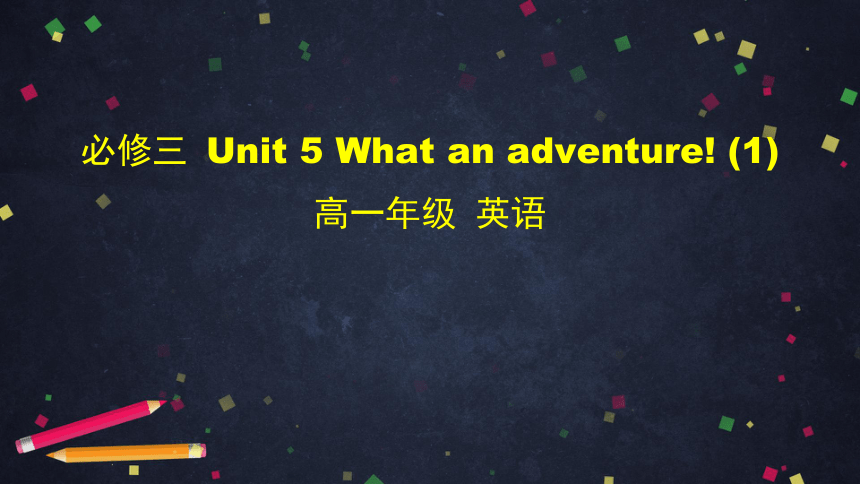 | |
| 格式 | zip | ||
| 文件大小 | 8.8MB | ||
| 资源类型 | 教案 | ||
| 版本资源 | 外研版(2019) | ||
| 科目 | 英语 | ||
| 更新时间 | 2020-06-21 19:45:02 | ||
图片预览

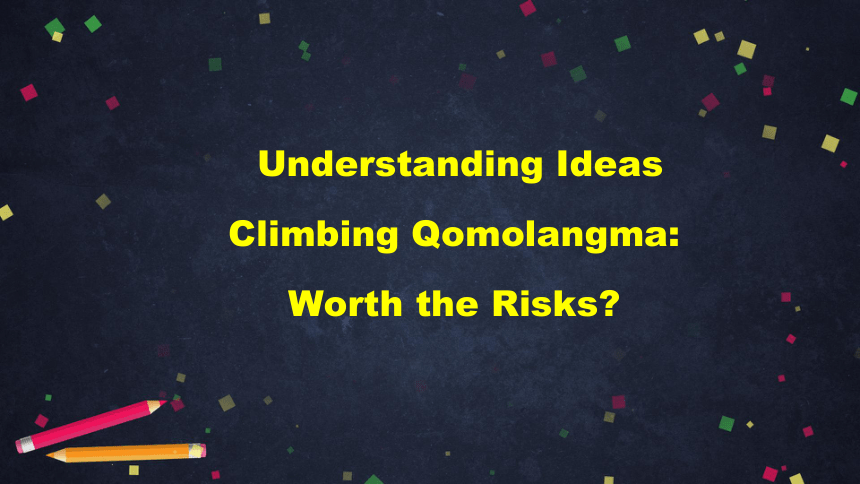
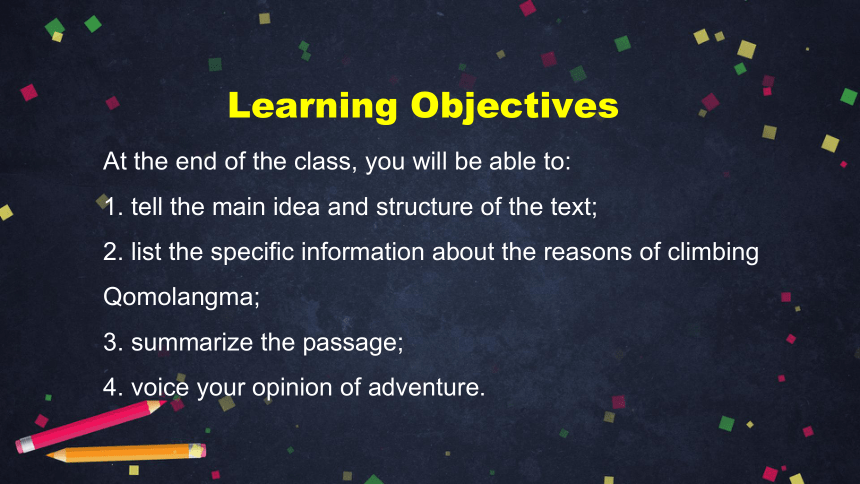
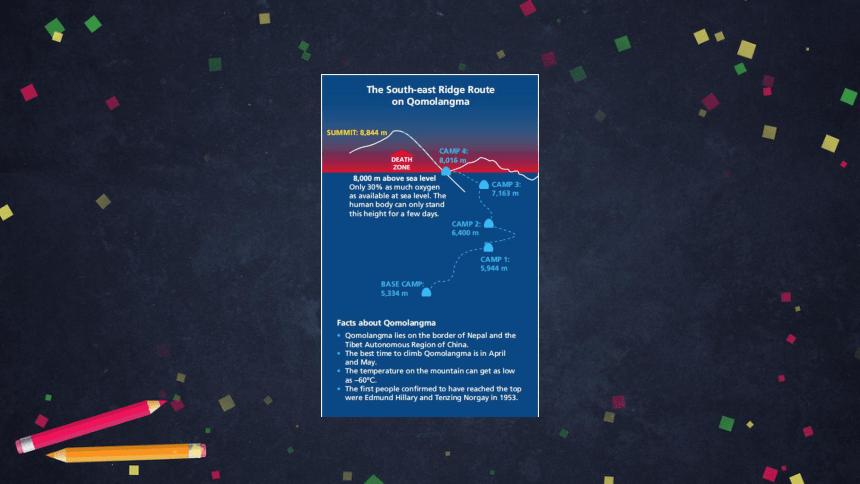
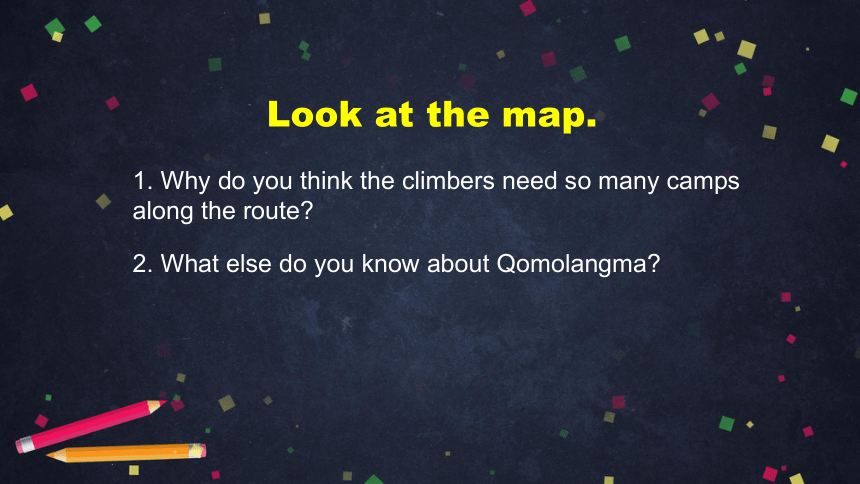
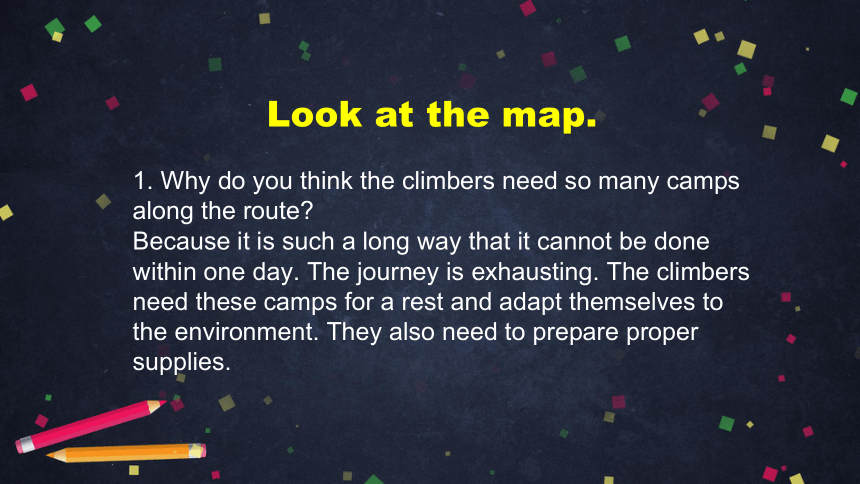
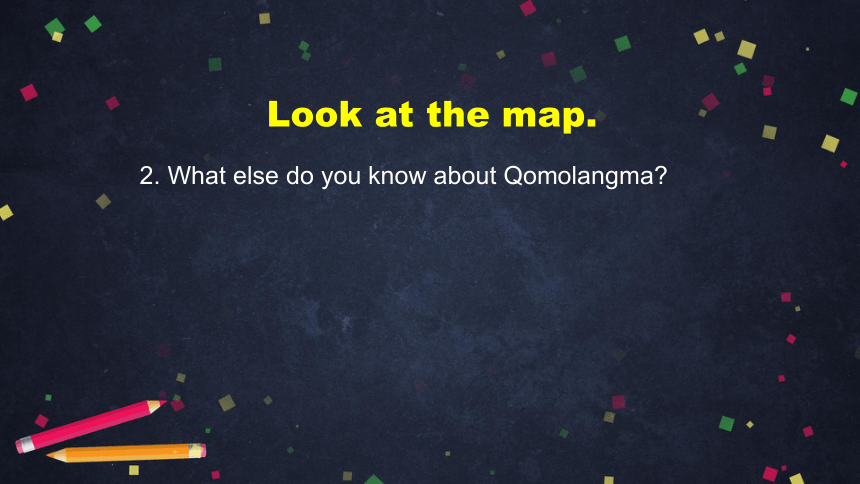
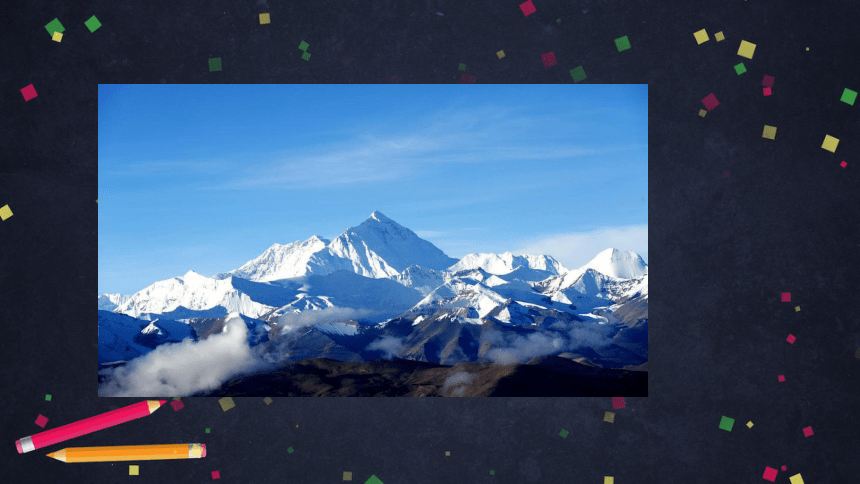
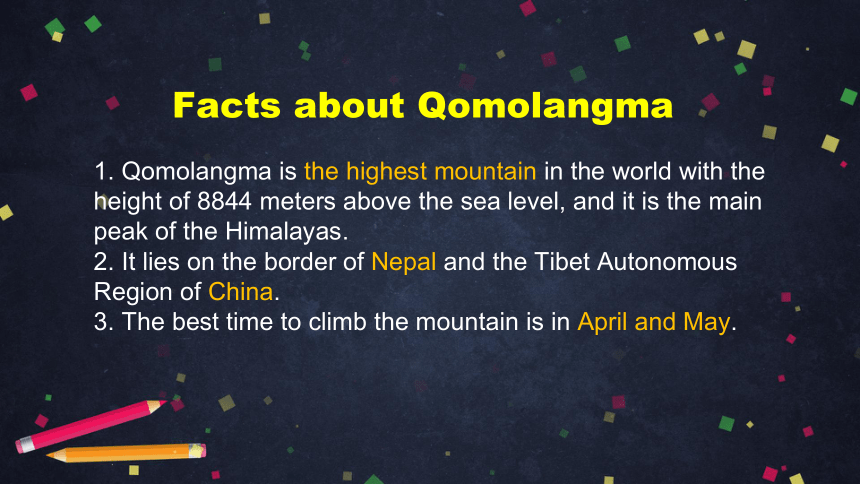


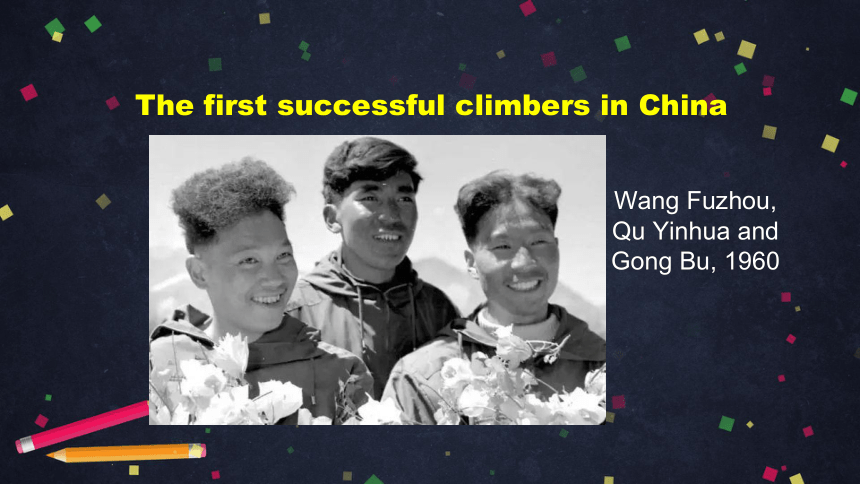
文档简介
(共48张PPT)
必修三
Unit
5
What
an
adventure!
(1)
高一年级
英语
Understanding
Ideas
Climbing
Qomolangma:
Worth
the
Risks?
Learning
Objectives
At
the
end
of
the
class,
you
will
be
able
to:
1.
tell
the
main
idea
and
structure
of
the
text;
2.
list
the
specific
information
about
the
reasons
of
climbing
Qomolangma;
3.
summarize
the
passage;
4.
voice
your
opinion
of
adventure.
Look
at
the
map.
2.
What
else
do
you
know
about
Qomolangma?
1.
Why
do
you
think
the
climbers
need
so
many
camps
along
the
route?
Look
at
the
map.
1.
Why
do
you
think
the
climbers
need
so
many
camps
along
the
route?
Because
it
is
such
a
long
way
that
it
cannot
be
done
within
one
day.
The
journey
is
exhausting.
The
climbers
need
these
camps
for
a
rest
and
adapt
themselves
to
the
environment.
They
also
need
to
prepare
proper
supplies.
Look
at
the
map.
2.
What
else
do
you
know
about
Qomolangma?
Facts
about
Qomolangma
1.
Qomolangma
is
the
highest
mountain
in
the
world
with
the
height
of
8844
meters
above
the
sea
level,
and
it
is
the
main
peak
of
the
Himalayas.
2.
It
lies
on
the
border
of
Nepal
and
the
Tibet
Autonomous
Region
of
China.
3.
The
best
time
to
climb
the
mountain
is
in
April
and
May.
Facts
about
Qomolangma
4.
The
temperature
on
the
mountain
can
get
as
low
as
-60℃.
5.
Qomolangma
attracts
many
climbers,
who
are
experienced
mountaineers.
There
are
two
main
climbing
routes,
one
approaching
the
summit
from
the
southeast
in
Nepal
and
the
other
from
the
north
in
Tibet.
The
first
successful
climbers
in
the
world
Edmund
Hillary
and
Tenzing
Norgay,
1953
The
first
successful
climbers
in
China
Wang
Fuzhou,
Qu
Yinhua
and
Gong
Bu,
1960
CLIMBING
QOMOLANGMA:
WORTH
THE
RISKS?
Reading
for
main
idea
Read
the
passage
and
find
out
how
many
climbers
are
mentioned
in
the
passage.
When
did
they
climb
Qomolangma?
In1924,
George
Mallory
would
die
on
the
mountain.
In
2011,
Alan
Arnettee
climbed
Qomolangma.
Reading
for
main
idea
Read
the
passage
and
tick
the
topics
mentioned
in
the
text.
paragraph
1
paragraph
2
1.
Climbing
Qomolangma
is
a
special
experience.
2.
George
Mallory
expressed
his
reasons
of
climbing.
3.
Alan
Arnette
expressed
his
reasons
of
climbing.
paragraph
3
Reading
for
main
idea
Read
the
passage
and
tick
the
topics
mentioned
in
the
text.
4.
There
are
some
scientific
reasons
of
risk-taking.
5.
Some
adventurers
are
“Type
T”
personalities.
6.
It
is
not
worth
the
risk
of
climbing
Qomolangma.
paragraph
4
Reading
for
main
idea
Think
about
the
relationship
of
the
paragraphs
and
find
out
the
writing
style
and
structure
of
the
text.
An
argumentation
Para.
1:
Introduction
of
the
topic
Para.
2—6:
Reasons
for
climbers’
risk-taking
Para.
7:
Conclusion
Reading
for
information
Read
the
text
carefully
and
answer
the
questions.
1.
What
are
the
possible
results
of
climbing
Qomolangma?
2.
Why
does
the
author
mention
that
climbing
Qomolangma
is
an
experience
like
no
other?
Reading
for
information
Read
Paragraph
1
and
answer
the
questions.
1.
What
are
the
possible
results
of
climbing
Qomolangma?
Some
people
may
return,
some
may
succeed
in
climbing
the
mountain,
and
a
few
even
lose
their
lives.
Climbing
Qomolangma
is
an
experience
like
no
other,
making
some
feel
weak
and
others
powerful.
Reading
for
information
Read
Paragraph
1
and
answer
the
questions.
2.
Why
does
the
author
mention
that
climbing
Qomolangma
is
an
experience
like
no
other?
Climbing
Qomolangma
is
a
special
and
difficult
experience.
It
would
include
crowds,
discomfort
and
danger.
Many
would
become
sick
due
to
the
extreme
cold
and
low
air
pressure,
and
a
few
would
even
lose
their
lives.
Reading
for
information
Read
Paragraph
1
and
answer
the
questions.
3.
Why
did
George
Mallory
climb
Qomolangma?
He
climbed
Qomolangma
because
of
sheer
joy
and
being
able
to
enjoy
life.
Reading
for
information
Read
Paragraph
2
and
answer
the
question.
4.
Why
did
Alan
Arnette
climb
Qomolangma?
He
believed
that
people
had
to
focus
on
the
most
important
and
unique
reason.
Adventures
force
people
to
look
deep
inside
themselves
and
figure
out
if
they
really
have
the
physical
and
mental
toughness.
Reading
for
information
Read
Paragraph
3
and
answer
the
question.
Reading
for
information
Read
Paragraph
4—6
and
answer
the
questions.
5.
What
are
the
scientific
reasons
behind
the
risk-taking?
6.
What
are
“Type
T”
personalities?
7.
What
are
the
common
points
between
the
reasons
of
the
two
climbers?
5.
What
are
the
scientific
reasons
behind
the
risk-taking?
Recent
studies
indicate
that
risk-taking
may
be
part
of
human
nature,
with
some
of
us
more
likely
to
take
risks
than
others.
The
personalities
of
these
people
are
“Type
T”.
Reading
for
information
Read
Paragraph
4—6
and
answer
the
questions.
6.
What
are
“Type
T”
personalities?
“Type
T”
personalities,
with
the
“T”
standing
for
“thrill”,
are
personality
traits
that
make
people
more
likely
to
take
risks
than
others.
Risk-taking
may
be
part
of
the
human
nature.
Reading
for
information
Read
Paragraph
4—6
and
answer
the
questions.
7.
What
are
the
common
points
between
the
reasons
of
the
two
climbers?
Mallory
mentioned
that
what
he
got
from
the
adventure
was
pure
joy
and
enjoying
life.
“That
is
what
life
means
and
what
life
is
for.”
Reading
for
information
Read
Paragraph
4—6
and
answer
the
questions.
Arnette
mentioned
that
the
adventure
brought
into
focus
what
was
important
and
forced
people
to
look
inside
themselves.
They
all
realized
that
it
was
important
for
them
to
know
what
was
important
in
their
lives.
Reading
for
information
Read
Paragraph
4—6
and
answer
the
questions.
8.
Is
it
worth
the
risk
to
climb
Qomolangma?
Climbing
Qomolangma
is
a
special
adventure,
which
has
the
benefits,
as
well
as
the
dangers.
It
is
totally
up
to
the
readers
to
decide
whether
it
is
worth
the
risks.
Reading
for
information
Read
Paragraph
7
and
answer
the
question.
Reading
for
information
Read
the
text
carefully
and
list
the
reasons
for
the
climbers’
risk-taking
by
drawing
a
mind
map.
Mind
Map
Para
2
George
Mallory:
just
pure
joy,
enjoy
life
Para
3
Alan
Arnette:
It
forces
people
to
look
inside
themselves
and
figure
out
if
they
have
the
mental
and
physical
toughness.
Subjective
reasons:
Scientific
reasons:
Para
4
&
5:
“Type
T”
personalities
Para
6:
man’s
desire
to
expect
to
benefit
from
the
result
of
adventure
Text
organization
Summarize
the
text
by
referring
to
the
mind
map.
Summary
Summary—The
Topic
The
essay
discusses
whether
it
is
worth
the
risks
to
climb
Qomolangma.
It
presents
the
topic
at
the
very
beginning—
climbing
Qomolangma
is
a
special
experience.
Summary—The
supporting
points
The
author
presents
the
reasons
for
the
climbers’
risk-taking
from
the
subjective
and
scientific
aspects.
As
for
the
subjective
reasons,
George
Mallory
believed
that
adventure
was
just
pure
joy
and
it
was
a
kind
of
enjoying
life.
In
Arnette’s
opinion,
adventure
forced
people
to
look
inside
themselves
and
figure
out
if
they
really
had
the
mental
and
physical
toughness.
As
for
the
scientific
reasons,
psychologist
Frank
Farley
studied
some
adventurers.
First,
it
indicates
that
risk-taking
may
be
a
part
of
human
nature
and
they
have
the
“Type
T”
personalities,
with
the
“T”
standing
for
“thrill”.
Second,
people
expect
to
benefit
from
the
result
of
risk-taking.
That’s
why
they
have
the
desire
to
seek
risks.
Summary—The
supporting
points
Summary—Conclusion
As
for
climbing
Qomolangma,
whether
it
is
worth
the
risks
or
not,
people
may
have
various
opinions.
It
depends
on
the
readers.
Reading
for
opinions
1.
To
encourage
people
to
climb
Qomolangma
if
fully
prepared,
as
risks
bring
many
benefits.
2.
To
remind
people
to
balance
the
benefits
and
risks
before
deciding
to
climb
Qomolangma.
3.
To
suggest
that
people
stop
taking
risks
and
climbing
Qomolangma,
as
the
risks
outweigh
the
benefits.
Choose
the
author’s
purpose
in
writing
the
passage.
Do
you
agree
with
Mallory’s
and
Arnette’s
opinions?
Why?
Yes,
I
agree
with
their
opinions.
Because
for
some
adventurers,
risk-taking
is
pure
joy
and
it
is
a
way
of
enjoying
life.
People
have
to
look
deep
inside
themselves
and
know
what
they
want
in
their
heart.
It
is
not
easy
to
climb
the
highest
mountain
in
the
world.
To
succeed,
people
must
have
the
physical
as
well
as
mental
toughness.
Reading
for
opinions
Watch
a
video
about
an
interview
of
the
climber
and
find
out
the
reasons
of
his
climbing.
Watch
a
video.
Watch
a
video
about
an
interview
of
the
climber
and
find
out
the
reasons
of
his
climbing.
Watch
a
video.
There
are
several
reasons
of
his
expedition.
1.
The
first
reason
is
friendship.
He
could
make
lots
of
friends;
2.
He
always
chose
the
hardest
way
to
go
and
he
enjoyed
the
challenge.
Think
and
Share
If
you
were
given
the
chance,
would
you
like
to
climb
Qomolangma?
Why
or
why
not?
If
I
were
given
the
chance,
I
would
like
to
climb
Qomolangma.
1.
I
am
interested
in
risk-taking
and
this
is
what
I
want
to
do
in
my
inner
heart.
2.
I
can
find
happiness
from
climbing
the
highest
mountain
in
the
world
and
I
have
the
confidence
to
conquer
it.
3.
I
am
a
young
and
experienced
mountaineer.
I
also
have
enough
money,
physical
and
mental
toughness.
Possible
answers:
No.1
I
don’t
want
to
climb
Qomolangma.
1.
Exploring
the
nature
is
great,
but
it
is
not
suitable
for
everyone.
People
have
different
health
and
economic
conditions.
Not
everyone
has
strong
body
and
enough
money
to
climb
Qomolangma.
Possible
answers:
No.2
2.
It
is
very
dangerous
to
climb
the
mountain
because
of
the
terrible
weather.
People
may
be
sick
or
even
lose
lives.
Everyone
has
his
own
value.
We
can
make
great
contributions
to
our
society
by
working
hard.
Possible
answers:
No.2
Summary
1.
Tell
the
main
idea
and
structure
of
the
essay;
2.
List
the
reasons
of
climbing
Qomolangma
by
drawing
a
mind
map;
3.
Summarize
the
passage;
4.
Voice
your
opinion
of
adventure.
Homework
Option
1.
Read
the
passage
and
add
some
useful
information
to
the
mind
map.
Option
2.
Write
a
summary
in
no
more
than
70
words.
Option
3.
Write
an
essay
on
“Climbing
Qomolangma:
worth
the
risks?”
必修三
Unit
5
What
an
adventure!
(1)
高一年级
英语
Understanding
Ideas
Climbing
Qomolangma:
Worth
the
Risks?
Learning
Objectives
At
the
end
of
the
class,
you
will
be
able
to:
1.
tell
the
main
idea
and
structure
of
the
text;
2.
list
the
specific
information
about
the
reasons
of
climbing
Qomolangma;
3.
summarize
the
passage;
4.
voice
your
opinion
of
adventure.
Look
at
the
map.
2.
What
else
do
you
know
about
Qomolangma?
1.
Why
do
you
think
the
climbers
need
so
many
camps
along
the
route?
Look
at
the
map.
1.
Why
do
you
think
the
climbers
need
so
many
camps
along
the
route?
Because
it
is
such
a
long
way
that
it
cannot
be
done
within
one
day.
The
journey
is
exhausting.
The
climbers
need
these
camps
for
a
rest
and
adapt
themselves
to
the
environment.
They
also
need
to
prepare
proper
supplies.
Look
at
the
map.
2.
What
else
do
you
know
about
Qomolangma?
Facts
about
Qomolangma
1.
Qomolangma
is
the
highest
mountain
in
the
world
with
the
height
of
8844
meters
above
the
sea
level,
and
it
is
the
main
peak
of
the
Himalayas.
2.
It
lies
on
the
border
of
Nepal
and
the
Tibet
Autonomous
Region
of
China.
3.
The
best
time
to
climb
the
mountain
is
in
April
and
May.
Facts
about
Qomolangma
4.
The
temperature
on
the
mountain
can
get
as
low
as
-60℃.
5.
Qomolangma
attracts
many
climbers,
who
are
experienced
mountaineers.
There
are
two
main
climbing
routes,
one
approaching
the
summit
from
the
southeast
in
Nepal
and
the
other
from
the
north
in
Tibet.
The
first
successful
climbers
in
the
world
Edmund
Hillary
and
Tenzing
Norgay,
1953
The
first
successful
climbers
in
China
Wang
Fuzhou,
Qu
Yinhua
and
Gong
Bu,
1960
CLIMBING
QOMOLANGMA:
WORTH
THE
RISKS?
Reading
for
main
idea
Read
the
passage
and
find
out
how
many
climbers
are
mentioned
in
the
passage.
When
did
they
climb
Qomolangma?
In1924,
George
Mallory
would
die
on
the
mountain.
In
2011,
Alan
Arnettee
climbed
Qomolangma.
Reading
for
main
idea
Read
the
passage
and
tick
the
topics
mentioned
in
the
text.
paragraph
1
paragraph
2
1.
Climbing
Qomolangma
is
a
special
experience.
2.
George
Mallory
expressed
his
reasons
of
climbing.
3.
Alan
Arnette
expressed
his
reasons
of
climbing.
paragraph
3
Reading
for
main
idea
Read
the
passage
and
tick
the
topics
mentioned
in
the
text.
4.
There
are
some
scientific
reasons
of
risk-taking.
5.
Some
adventurers
are
“Type
T”
personalities.
6.
It
is
not
worth
the
risk
of
climbing
Qomolangma.
paragraph
4
Reading
for
main
idea
Think
about
the
relationship
of
the
paragraphs
and
find
out
the
writing
style
and
structure
of
the
text.
An
argumentation
Para.
1:
Introduction
of
the
topic
Para.
2—6:
Reasons
for
climbers’
risk-taking
Para.
7:
Conclusion
Reading
for
information
Read
the
text
carefully
and
answer
the
questions.
1.
What
are
the
possible
results
of
climbing
Qomolangma?
2.
Why
does
the
author
mention
that
climbing
Qomolangma
is
an
experience
like
no
other?
Reading
for
information
Read
Paragraph
1
and
answer
the
questions.
1.
What
are
the
possible
results
of
climbing
Qomolangma?
Some
people
may
return,
some
may
succeed
in
climbing
the
mountain,
and
a
few
even
lose
their
lives.
Climbing
Qomolangma
is
an
experience
like
no
other,
making
some
feel
weak
and
others
powerful.
Reading
for
information
Read
Paragraph
1
and
answer
the
questions.
2.
Why
does
the
author
mention
that
climbing
Qomolangma
is
an
experience
like
no
other?
Climbing
Qomolangma
is
a
special
and
difficult
experience.
It
would
include
crowds,
discomfort
and
danger.
Many
would
become
sick
due
to
the
extreme
cold
and
low
air
pressure,
and
a
few
would
even
lose
their
lives.
Reading
for
information
Read
Paragraph
1
and
answer
the
questions.
3.
Why
did
George
Mallory
climb
Qomolangma?
He
climbed
Qomolangma
because
of
sheer
joy
and
being
able
to
enjoy
life.
Reading
for
information
Read
Paragraph
2
and
answer
the
question.
4.
Why
did
Alan
Arnette
climb
Qomolangma?
He
believed
that
people
had
to
focus
on
the
most
important
and
unique
reason.
Adventures
force
people
to
look
deep
inside
themselves
and
figure
out
if
they
really
have
the
physical
and
mental
toughness.
Reading
for
information
Read
Paragraph
3
and
answer
the
question.
Reading
for
information
Read
Paragraph
4—6
and
answer
the
questions.
5.
What
are
the
scientific
reasons
behind
the
risk-taking?
6.
What
are
“Type
T”
personalities?
7.
What
are
the
common
points
between
the
reasons
of
the
two
climbers?
5.
What
are
the
scientific
reasons
behind
the
risk-taking?
Recent
studies
indicate
that
risk-taking
may
be
part
of
human
nature,
with
some
of
us
more
likely
to
take
risks
than
others.
The
personalities
of
these
people
are
“Type
T”.
Reading
for
information
Read
Paragraph
4—6
and
answer
the
questions.
6.
What
are
“Type
T”
personalities?
“Type
T”
personalities,
with
the
“T”
standing
for
“thrill”,
are
personality
traits
that
make
people
more
likely
to
take
risks
than
others.
Risk-taking
may
be
part
of
the
human
nature.
Reading
for
information
Read
Paragraph
4—6
and
answer
the
questions.
7.
What
are
the
common
points
between
the
reasons
of
the
two
climbers?
Mallory
mentioned
that
what
he
got
from
the
adventure
was
pure
joy
and
enjoying
life.
“That
is
what
life
means
and
what
life
is
for.”
Reading
for
information
Read
Paragraph
4—6
and
answer
the
questions.
Arnette
mentioned
that
the
adventure
brought
into
focus
what
was
important
and
forced
people
to
look
inside
themselves.
They
all
realized
that
it
was
important
for
them
to
know
what
was
important
in
their
lives.
Reading
for
information
Read
Paragraph
4—6
and
answer
the
questions.
8.
Is
it
worth
the
risk
to
climb
Qomolangma?
Climbing
Qomolangma
is
a
special
adventure,
which
has
the
benefits,
as
well
as
the
dangers.
It
is
totally
up
to
the
readers
to
decide
whether
it
is
worth
the
risks.
Reading
for
information
Read
Paragraph
7
and
answer
the
question.
Reading
for
information
Read
the
text
carefully
and
list
the
reasons
for
the
climbers’
risk-taking
by
drawing
a
mind
map.
Mind
Map
Para
2
George
Mallory:
just
pure
joy,
enjoy
life
Para
3
Alan
Arnette:
It
forces
people
to
look
inside
themselves
and
figure
out
if
they
have
the
mental
and
physical
toughness.
Subjective
reasons:
Scientific
reasons:
Para
4
&
5:
“Type
T”
personalities
Para
6:
man’s
desire
to
expect
to
benefit
from
the
result
of
adventure
Text
organization
Summarize
the
text
by
referring
to
the
mind
map.
Summary
Summary—The
Topic
The
essay
discusses
whether
it
is
worth
the
risks
to
climb
Qomolangma.
It
presents
the
topic
at
the
very
beginning—
climbing
Qomolangma
is
a
special
experience.
Summary—The
supporting
points
The
author
presents
the
reasons
for
the
climbers’
risk-taking
from
the
subjective
and
scientific
aspects.
As
for
the
subjective
reasons,
George
Mallory
believed
that
adventure
was
just
pure
joy
and
it
was
a
kind
of
enjoying
life.
In
Arnette’s
opinion,
adventure
forced
people
to
look
inside
themselves
and
figure
out
if
they
really
had
the
mental
and
physical
toughness.
As
for
the
scientific
reasons,
psychologist
Frank
Farley
studied
some
adventurers.
First,
it
indicates
that
risk-taking
may
be
a
part
of
human
nature
and
they
have
the
“Type
T”
personalities,
with
the
“T”
standing
for
“thrill”.
Second,
people
expect
to
benefit
from
the
result
of
risk-taking.
That’s
why
they
have
the
desire
to
seek
risks.
Summary—The
supporting
points
Summary—Conclusion
As
for
climbing
Qomolangma,
whether
it
is
worth
the
risks
or
not,
people
may
have
various
opinions.
It
depends
on
the
readers.
Reading
for
opinions
1.
To
encourage
people
to
climb
Qomolangma
if
fully
prepared,
as
risks
bring
many
benefits.
2.
To
remind
people
to
balance
the
benefits
and
risks
before
deciding
to
climb
Qomolangma.
3.
To
suggest
that
people
stop
taking
risks
and
climbing
Qomolangma,
as
the
risks
outweigh
the
benefits.
Choose
the
author’s
purpose
in
writing
the
passage.
Do
you
agree
with
Mallory’s
and
Arnette’s
opinions?
Why?
Yes,
I
agree
with
their
opinions.
Because
for
some
adventurers,
risk-taking
is
pure
joy
and
it
is
a
way
of
enjoying
life.
People
have
to
look
deep
inside
themselves
and
know
what
they
want
in
their
heart.
It
is
not
easy
to
climb
the
highest
mountain
in
the
world.
To
succeed,
people
must
have
the
physical
as
well
as
mental
toughness.
Reading
for
opinions
Watch
a
video
about
an
interview
of
the
climber
and
find
out
the
reasons
of
his
climbing.
Watch
a
video.
Watch
a
video
about
an
interview
of
the
climber
and
find
out
the
reasons
of
his
climbing.
Watch
a
video.
There
are
several
reasons
of
his
expedition.
1.
The
first
reason
is
friendship.
He
could
make
lots
of
friends;
2.
He
always
chose
the
hardest
way
to
go
and
he
enjoyed
the
challenge.
Think
and
Share
If
you
were
given
the
chance,
would
you
like
to
climb
Qomolangma?
Why
or
why
not?
If
I
were
given
the
chance,
I
would
like
to
climb
Qomolangma.
1.
I
am
interested
in
risk-taking
and
this
is
what
I
want
to
do
in
my
inner
heart.
2.
I
can
find
happiness
from
climbing
the
highest
mountain
in
the
world
and
I
have
the
confidence
to
conquer
it.
3.
I
am
a
young
and
experienced
mountaineer.
I
also
have
enough
money,
physical
and
mental
toughness.
Possible
answers:
No.1
I
don’t
want
to
climb
Qomolangma.
1.
Exploring
the
nature
is
great,
but
it
is
not
suitable
for
everyone.
People
have
different
health
and
economic
conditions.
Not
everyone
has
strong
body
and
enough
money
to
climb
Qomolangma.
Possible
answers:
No.2
2.
It
is
very
dangerous
to
climb
the
mountain
because
of
the
terrible
weather.
People
may
be
sick
or
even
lose
lives.
Everyone
has
his
own
value.
We
can
make
great
contributions
to
our
society
by
working
hard.
Possible
answers:
No.2
Summary
1.
Tell
the
main
idea
and
structure
of
the
essay;
2.
List
the
reasons
of
climbing
Qomolangma
by
drawing
a
mind
map;
3.
Summarize
the
passage;
4.
Voice
your
opinion
of
adventure.
Homework
Option
1.
Read
the
passage
and
add
some
useful
information
to
the
mind
map.
Option
2.
Write
a
summary
in
no
more
than
70
words.
Option
3.
Write
an
essay
on
“Climbing
Qomolangma:
worth
the
risks?”
